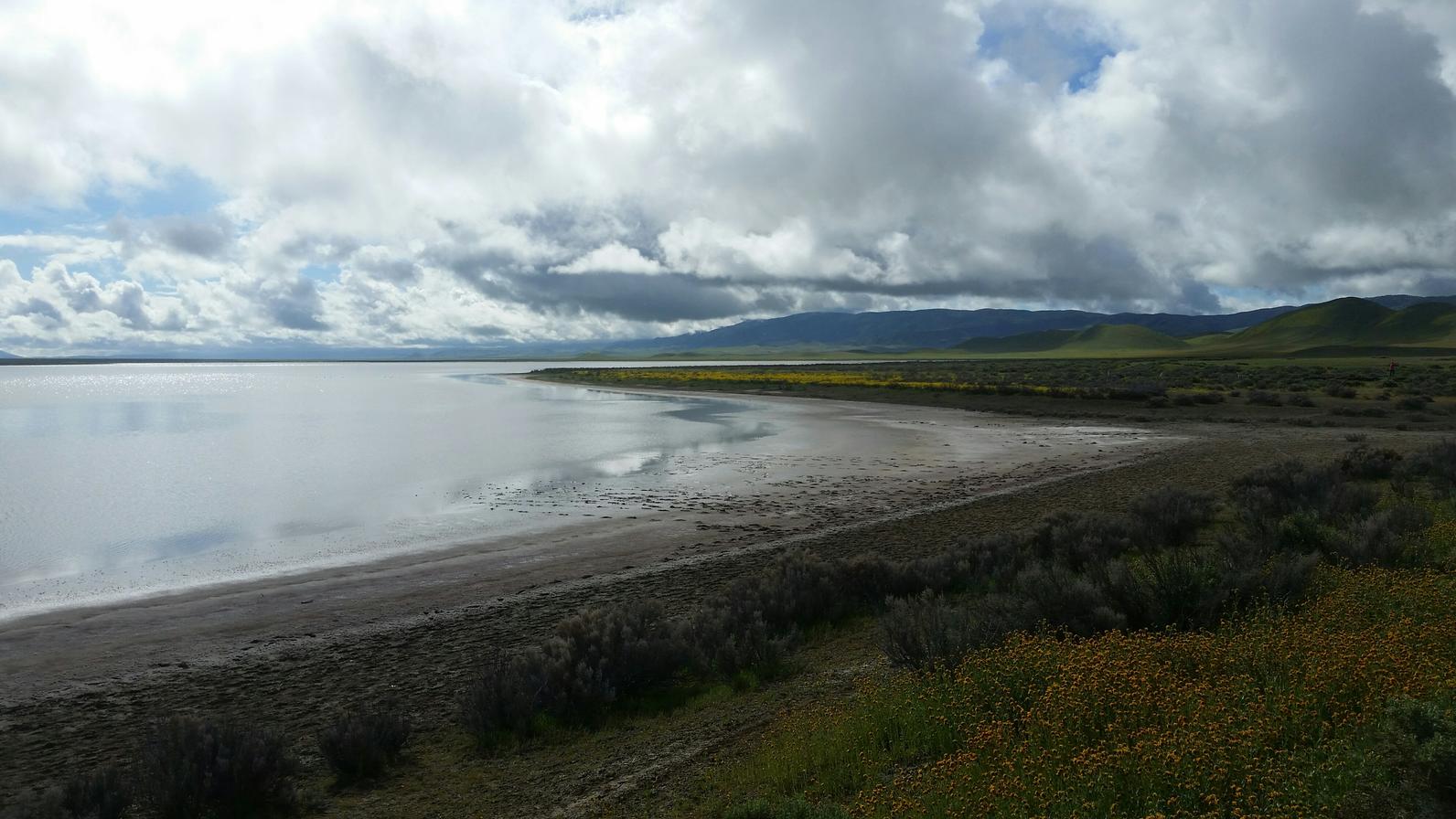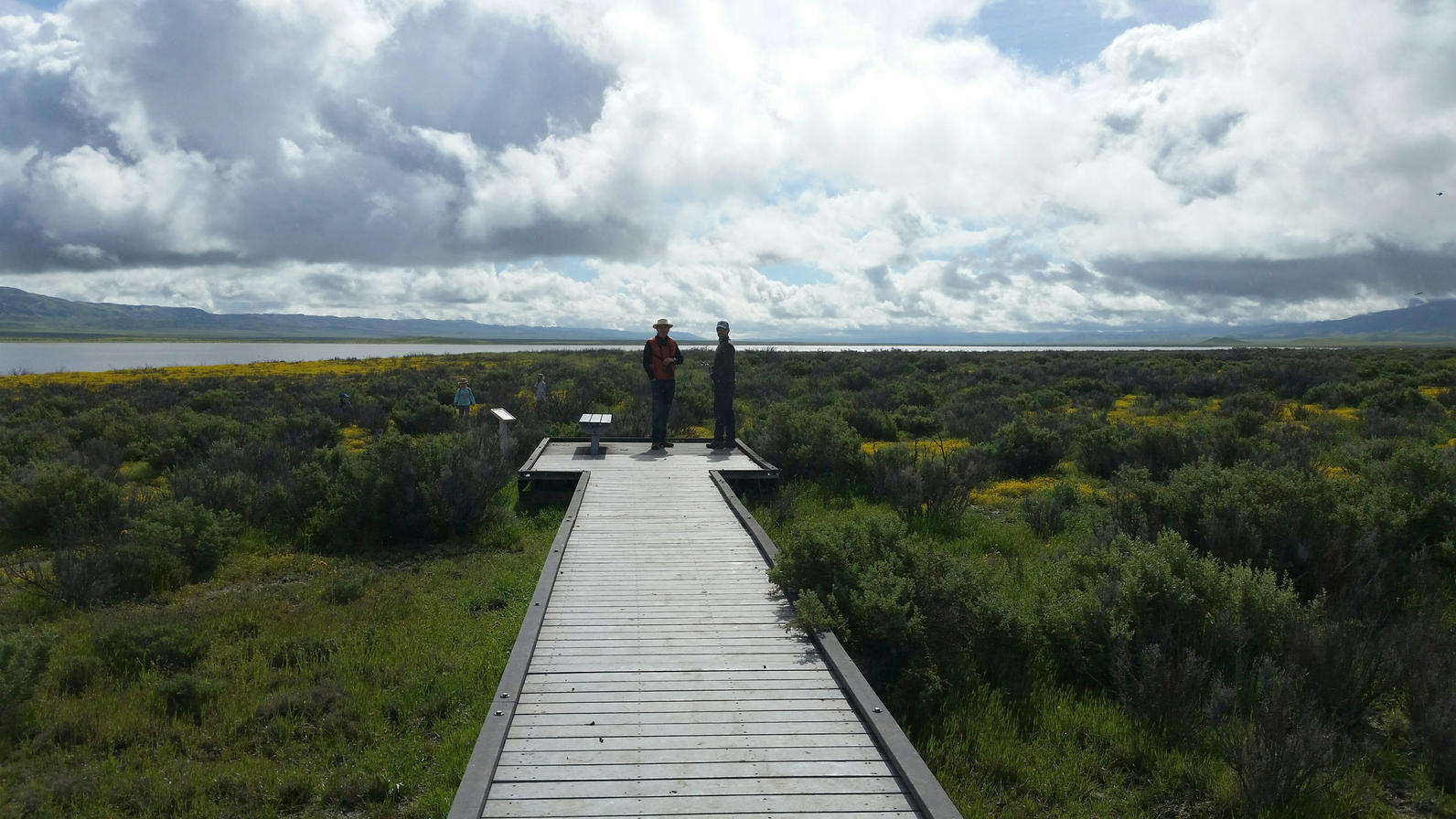
On the last weekend in March, I embarked on my annual pilgrimage to Carrizo Plain National Monument, located along the border of Kern County and San Luis Obispo County in central California. The Carrizo Plain Important Bird Area is a remnant grassland of the San Joaquin Valley grassland system, supporting many endangered species, including the giant kangaroo rat and the San Joaquin kit fox. It is well known in the birding world for its large numbers of wintering raptors, and spring specialties such as LeConte’s Thrasher and Bell’s Sparrow. It is also known as a place where people go to marvel at the annual wildflower display in late-March/early-April, where the plain is carpeted in a sea of yellow, purple and orange native wildflowers.
Often called the “Serengeti of California,” the Carrizo Plain is a place I’ve been drawn to for years for its birds, mammals, wildflowers, and vast open expanses that evoke a sense of what California used to look like. In recent years, during the drought, I’ve held out my hopes for the Carrizo, but have been met with a small smattering of yellow flowers, a few sparrows singing, a lot of dust, the odd raptor or two, and a stark white salt panne where a soda lake should exist. The drought took its toll on this area, for sure.

This year, the Carrizo Plain did not disappoint at all. Driving in at night gave us a first sense that the Carrizo had sprung back to life. Burrowing Owls and Short-eared Owls dashed pass the car headlights. In the morning, the aroma of wildflowers was strong, and Western Meadowlarks and Horned Larks filled the air with noise. The salt panne was gone, replaced with a large body of water reflecting the gold and purple hills around it.
As we approached the lake that morning, Bell’s Sparrows sang from the salt bush and I saw dots on the water. On closers inspection, the dots were Eared Grebes and distant shorebirds. This gave me the sense that in this harsh desert-like environment, plants and wildlife are adapted to drought conditions and can to some degree adapt accordingly. While the drought certainly had an impact on the wildlife, it is possibly more resilient than areas not typically used to dry conditions.
It also led me to wonder, in the saline lake system of the intermountain west, birds must be somehow adapted to take advantage of these saline lakes that pop in and out of existence – the rate with which a bird can find a place like the Soda Lake on the Carrizo Plain, dry for five years, is really remarkable. How did a flock of Eared Grebes, usually wintering at the Salton Sea or coastal areas, happen upon the Soda Lake so fast?
Tom Edell, one of the top birders in San Luis Obispo County, announced his findings on the local birding listserv the week after my visit. He confirms what Audubon is working to do, which is to ensure the protection and water supply for a network of saline lakes across the West so that there are places for birds as they migrate through an otherwise harsh landscape, to stop, feed, rest, and sometimes nest. Without these lakes, where would the birds go?
“The most expected shorebird, American Avocet, was widespread and a nesting colony was on an island at one location. One small flock of 10 Black-necked Stilts was along the shoreline on the east side of Soda Lake. Fourteen Whimbrels were with a flock of 37 Long-billed Curlews at the southwest end of Soda lake. At one location I found a flock of about 200 Western Sandpipers, two Dunlin, two Black-bellied Plovers, three dowitchers, and 23 Greater Yellowlegs. My records indicate that this is only the third Dunlin record for the Carrizo Plain, though surely they must move through during the spring season when water is present. A flock of 55 Eared Grebes were on Soda Lake and later seen again on the large “pond” east of San Diego-Simmler Road.”

Andrea Jones is director of bird conservation for Audubon California.
By Andrea Jones
Monthly Giving
Our monthly giving program offers the peace of mind that you’re doing your part every day.




